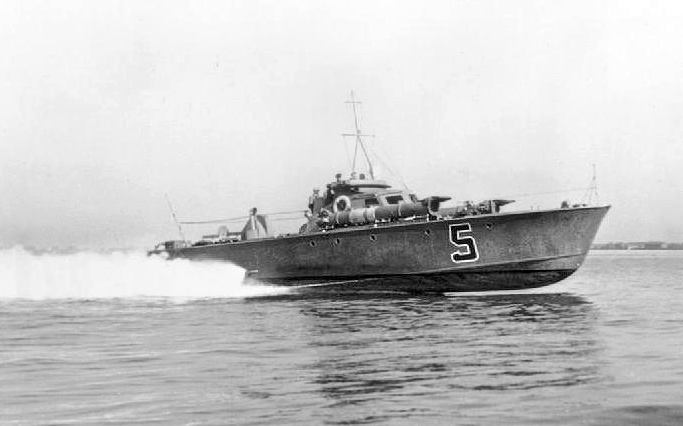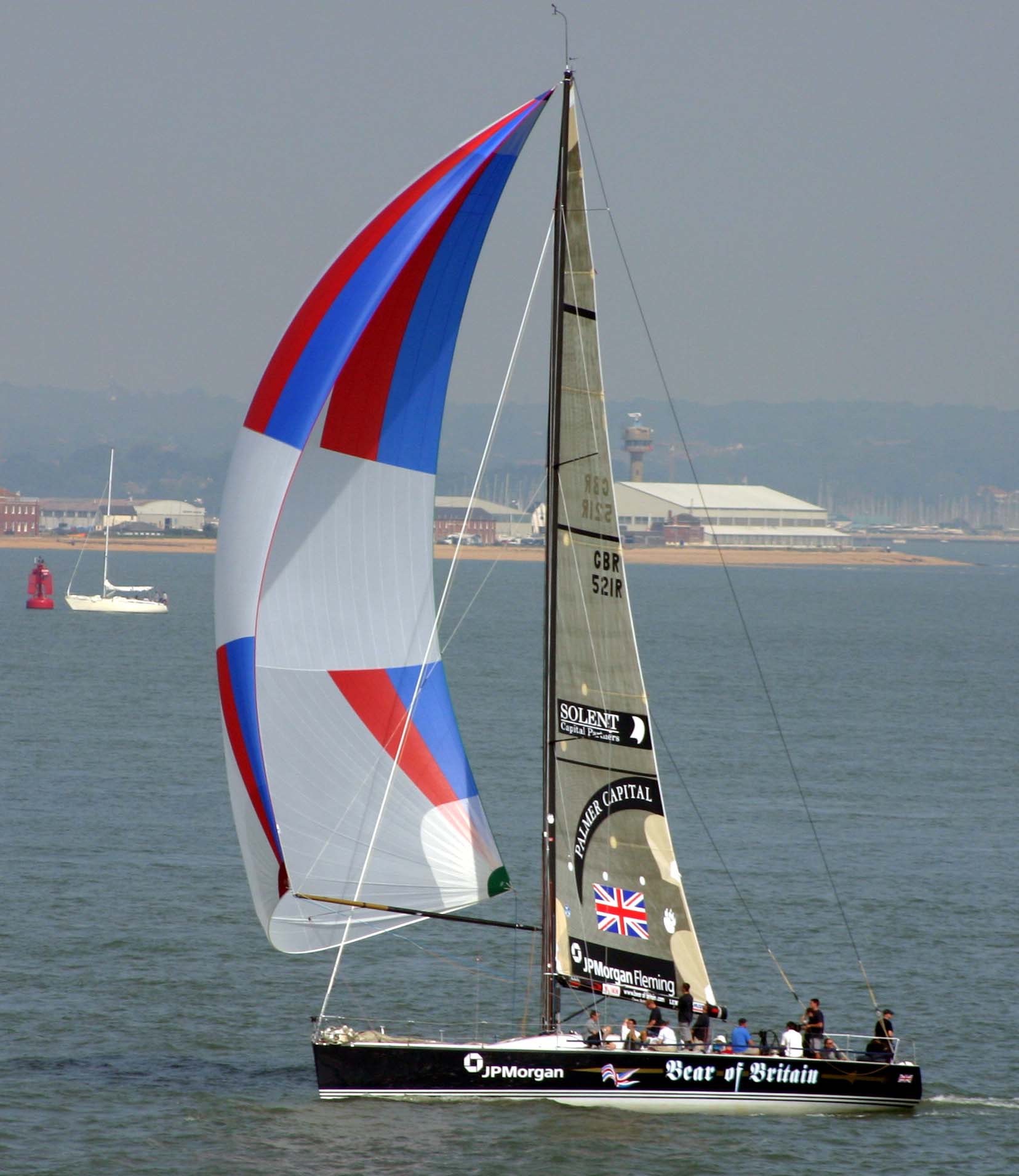|
Sportsboat
The term sportsboat first appeared in the late 1980s and early 1990s to describe trailer sailers that were optimised for high performance at the expense of accommodation and ballast. The very definition of the term "sportsboat" is evolving. There is an absence of an accepted definition of the term. They tend to be characterised by historically large sail areas for a given length (especially under downwind sails), light weight construction and a heavy reliance on crew weight to counterbalance heeling forces. They usually feature lifting keels (for easy trailerability) of a modern fin and bulb design and planing hull designs. Most sportsboats are self-righting as opposed to skiffs. As similar design philosophies spread into larger classes the length of most sportsboats has come to be considered as between 5.5m and 8m (18'-26'). Boats of a similar design but of larger size have come to be known as sports yachts and are generally in the size range of 9m - 12m. Their noncomformity ... [...More Info...] [...Related Items...] OR: [Wikipedia] [Google] [Baidu] |
Trailer Sailer
A trailer sailer is a type of sailboat that has been designed to be easily transported using a boat trailer towed by an automobile. They are generally larger than a sailing dinghy.Royce, Patrick M.: ''Royces Sailing Illustrated'', pages 52-57. Delta Lithograph, 1993. Trailer sailers include day sailers and small cabin cruisers, suitable for living on. Trailer sailers are used for both racing and recreation and are popular with small families and retirees. They occupy a space between smaller trailerable sailing dinghies which are intended for day use and larger boats which can only be removed from the water with specialised equipment such as boat lifting cranes. Unlike dinghies, many feature enclosed cabins which allow for overnight sleeping and dry storage. Most trailer sailers also feature ballast, either fixed or in a swinging centreboard or dagger board to make them easier to launch and retrieve. This makes these boats more stable than a dinghy, as well as less prone to ... [...More Info...] [...Related Items...] OR: [Wikipedia] [Google] [Baidu] |
Handicap (sailing)
Handicap forms for sailing vessels in Yacht racing, sailing races have varied throughout history, and they also vary by country, and by sailing organisation. Sailing handicap standards exist internationally, nationally, and within individual sailing clubs. Typically sailing vessel classes are defined by measurement rules, which categorise vessels accordingly into classes of vessels, and vessels compete within their class. Handicapping allows vessels to compete across classes, and also allows vessels and crews to compete based on performance and equipment on an equal basis, by adjusting the race outcome data, to declare a ''handicap'' (adjusted) winner as distinct from a ''line honours'' (first over the finish line) winner. For some national, international, and other yacht racing events, rules such as those of the International Racing Certificate known as the International Measurement System (IMS) or the Sportsboat rule (SBR) may be specified. Others exist in different countries. ... [...More Info...] [...Related Items...] OR: [Wikipedia] [Google] [Baidu] |
Planing (boat)
Planing ( ) is the mode of operation for a waterborne craft in which its weight is predominantly supported by hydrodynamic lift, rather than hydrostatic lift (buoyancy). Many forms of marine transport make use of planing, including fast ferries, racing boats, floatplanes, flying boats, seaplanes, and water skis. Most surfboards are planing or semi-planing hulls. Beyond planing, fast vessel designs have seen a transition to hydrofoil designs. History The earliest documented planing sailboat was a proa built in 1898 by Commodore Ralph Munroe. It was capable of speeds of more than twice the hull speed. Planing a sailing dinghy was first popularised by Uffa Fox in Britain. In 1928 Fox introduced planing to the racing world in his International 14 dinghy, ''Avenger''. That year he gained 52 first places, 2 seconds, and 3 third places out of 57 race starts. This performance was noticed by other designers who further developed them. Over the years many dinghies have acquired ... [...More Info...] [...Related Items...] OR: [Wikipedia] [Google] [Baidu] |
Planing (sailing)
Planing ( ) is the mode of operation for a waterborne craft in which its weight is predominantly supported by hydrodynamic lift, rather than hydrostatic lift (buoyancy). Many forms of marine transport make use of planing, including fast ferries, racing boats, floatplanes, flying boats, seaplanes, and water skis. Most surfboards are planing or semi-planing hulls. Beyond planing, fast vessel designs have seen a transition to hydrofoil designs. History The earliest documented planing sailboat was a proa built in 1898 by Commodore Ralph Munroe. It was capable of speeds of more than twice the hull speed. Planing a sailing dinghy was first popularised by Uffa Fox in Britain. In 1928 Fox introduced planing to the racing world in his International 14 dinghy, ''Avenger''. That year he gained 52 first places, 2 seconds, and 3 third places out of 57 race starts. This performance was noticed by other designers who further developed them. Over the years many dinghies have acquired th ... [...More Info...] [...Related Items...] OR: [Wikipedia] [Google] [Baidu] |
Spinnaker
A spinnaker is a sail designed specifically for sailing off the wind on courses between a reach (wind at 90° to the course) to downwind (course in the same direction as the wind). Spinnakers are constructed of lightweight fabric, usually nylon, and are often brightly colored. They may be designed to perform best as either a reaching or a running spinnaker, by the shaping of the panels and seams. They are attached at only three points and said to be ''flown''. Nomenclature Informal names for a spinnaker are ''kite'' or ''chute'' (owing to their resemblance to a parachute in both construction and appearance). Boats may have more than one spinnaker, differentiated by a letter to indicate symmetric (S) or asymmetric (A) and a number to indicate size (with higher numbers indicating smaller size), e.g. ''A1'' would be a large asymmetric sail and ''S3'' would be a smaller symmetric sail. Operation A spinnaker is used for sailing with the direction of the wind. Symmetrical s ... [...More Info...] [...Related Items...] OR: [Wikipedia] [Google] [Baidu] |
B&R 23 Sportsboat (SWE 9)
B&R Industrial Automation GmbH is an Austrian automation and process control technology company. It was founded in 1979 by Erwin Bernecker and Josef Rainer, and is headquartered in Eggelsberg, near Braunau in the state of Upper Austria. The company specializes in machine and factory control systems, HMI and motion control. In addition to scalable complete solutions, B&R also offers individual components. The product range is oriented toward machinery and equipment manufacturing, and the company is also active in the field of factory and process automation. In July 2017, the company was acquired by the Swiss ABB Group. Performance B&R concluded 2015 with a revenue of €585 million, a 10% increase over the previous year. In 2014, the company posted growth of 13% to 535 million euros. In the same year, B&R opened two new subsidiaries in Japan. and Singapore. The company's 2013 revenue of 475 million euro The euro ( symbol: €; code: EUR) is the official curr ... [...More Info...] [...Related Items...] OR: [Wikipedia] [Google] [Baidu] |
Spinnaker
A spinnaker is a sail designed specifically for sailing off the wind on courses between a reach (wind at 90° to the course) to downwind (course in the same direction as the wind). Spinnakers are constructed of lightweight fabric, usually nylon, and are often brightly colored. They may be designed to perform best as either a reaching or a running spinnaker, by the shaping of the panels and seams. They are attached at only three points and said to be ''flown''. Nomenclature Informal names for a spinnaker are ''kite'' or ''chute'' (owing to their resemblance to a parachute in both construction and appearance). Boats may have more than one spinnaker, differentiated by a letter to indicate symmetric (S) or asymmetric (A) and a number to indicate size (with higher numbers indicating smaller size), e.g. ''A1'' would be a large asymmetric sail and ''S3'' would be a smaller symmetric sail. Operation A spinnaker is used for sailing with the direction of the wind. Symmetrical s ... [...More Info...] [...Related Items...] OR: [Wikipedia] [Google] [Baidu] |
Broad Reach
A point of sail is a sailing craft's direction of travel under sail in relation to the true wind direction over the surface. The principal points of sail roughly correspond to 45° segments of a circle, starting with 0° directly into the wind. For many sailing craft 45° on either side of the wind is a ''no-go'' zone, where a sail is unable to mobilize power from the wind. Sailing on a course as close to the wind as possible—approximately 45°—is termed ''beating'', a point of sail when the sails are ''close-hauled''. At 90° off the wind, a craft is on a ''beam reach''. The point of sail between beating and a beam reach is called a ''close reach''. At 135° off the wind, a craft is on a ''broad reach''. At 180° off the wind (sailing in the same direction as the wind), a craft is ''running downwind''. A given point of sail (beating, close reach, beam reach, broad reach, and running downwind) is defined in reference to the true wind—the wind felt by a stationary observ ... [...More Info...] [...Related Items...] OR: [Wikipedia] [Google] [Baidu] |
Displacement Hull
A hull is the watertight body of a ship, boat, or flying boat. The hull may open at the top (such as a dinghy), or it may be fully or partially covered with a deck. Atop the deck may be a deckhouse and other superstructures, such as a funnel, derrick, or mast. The line where the hull meets the water surface is called the waterline. General features There is a wide variety of hull types that are chosen for suitability for different usages, the hull shape being dependent upon the needs of the design. Shapes range from a nearly perfect box in the case of scow barges to a needle-sharp surface of revolution in the case of a racing multihull sailboat. The shape is chosen to strike a balance between cost, hydrostatic considerations (accommodation, load carrying, and stability), hydrodynamics (speed, power requirements, and motion and behavior in a seaway) and special considerations for the ship's role, such as the rounded bow of an icebreaker or the flat bottom of a landing craft. In ... [...More Info...] [...Related Items...] OR: [Wikipedia] [Google] [Baidu] |
Bowsprit
The bowsprit of a sailing vessel is a spar extending forward from the vessel's prow. The bowsprit is typically held down by a bobstay A bobstay is a part of the rigging of a sailing boat or ship. Its purpose is to counteract the upward tension on the bowsprit from the jibs and forestay. A bobstay may run directly from the stem to the bowsprit, References ...
|
Wing
A wing is a type of fin that produces lift while moving through air or some other fluid. Accordingly, wings have streamlined cross-sections that are subject to aerodynamic forces and act as airfoils. A wing's aerodynamic efficiency is expressed as its lift-to-drag ratio. The lift a wing generates at a given speed and angle of attack can be one to two orders of magnitude greater than the total drag on the wing. A high lift-to-drag ratio requires a significantly smaller thrust to propel the wings through the air at sufficient lift. Lifting structures used in water include various foils, such as hydrofoils. Hydrodynamics is the governing science, rather than aerodynamics. Applications of underwater foils occur in hydroplanes, sailboats and submarines. Etymology and usage For many centuries, the word "wing", from the Old Norse ''vængr'', referred mainly to the foremost limbs of birds (in addition to the architectural aisle). But in recent centuries the word's meanin ... [...More Info...] [...Related Items...] OR: [Wikipedia] [Google] [Baidu] |







.jpg)